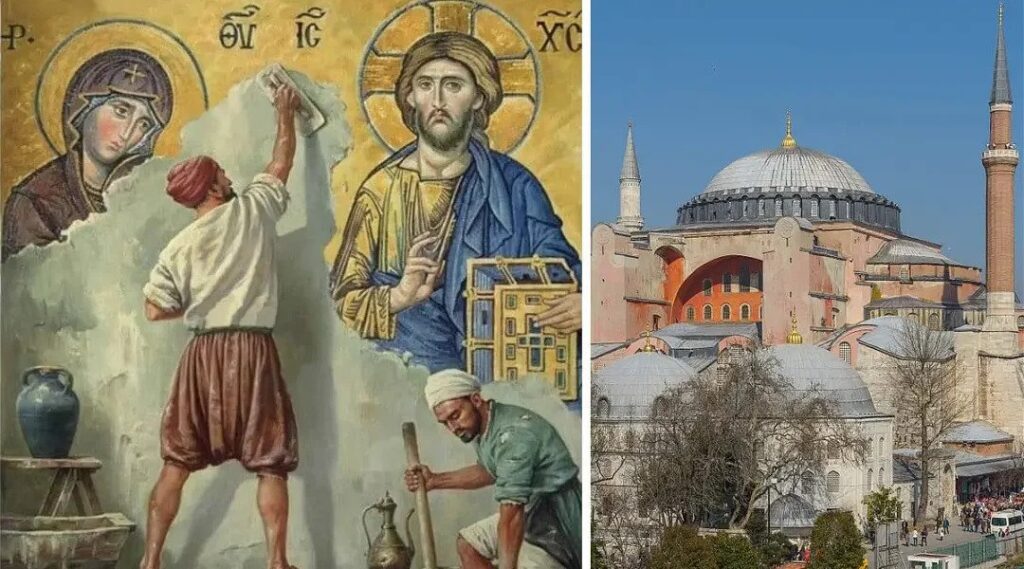Istanbul’s magnificent Hagia Sophia, a UNESCO World Heritage Site and symbol of centuries-long religious and cultural interplay, has reopened its upper gallery to visitors after a hiatus, but with dramatic changes that have sparked praise, criticism, and debate.

Gone are the days of free entry for all. Non-Muslim tourists above the age of eight now face a hefty €25 entrance fee, while Turkish citizens can enter the worship area for free. This comes alongside a complete overhaul of the visitor experience, including:
- Separate entrances: Tourists access the upper gallery through a dedicated entrance, while Turkish citizens have their own entrance for the ground-floor worship area.
- Limited access: Foreign visitors only get to explore the upper gallery, missing out on renowned mosaics like the Deësis and Emperor Leo IV on the ground floor.
- Audio guides: Live tours are no longer allowed, replaced by app-based and rented audio guides (additional charge).
These changes have generated a mixed bag of reactions:
Tourists:
- Positive: Some appreciate the reduced crowds and more organized flow, especially during peak season.
- Negative: Others lament the inability to access key areas like the ground-floor mosaics and the loss of personal interaction with live guides.
Locals:
- Mixed feelings: Tour guides miss the lost income from live tours, while some residents welcome the eased congestion within the mosque.
- Debate: Some locals question the necessity of restricting access for foreign visitors, arguing it limits cultural exchange.
Historians:
- Divided opinions: Some see the new system as beneficial for the preservation of the ancient structure, while others criticize the restricted access as hindering appreciation of its full cultural heritage.
The controversy surrounding the Hagia Sophia’s reconversion into a mosque in 2020 still lingers. The introduction of an entrance fee specifically for non-Muslims has reignited discussions, with some citing historical precedents of charging foreign visitors, while others view it as discriminatory.
Only time will tell how these changes will impact tourism and the overall preservation of this iconic landmark. The initial reactions suggest a need for adaptation as the new system settles in, balancing the concerns of various stakeholders while ensuring the long-term sustainability and accessibility of this unique cultural treasure.
Hagia Sofia
- Originally Built as a Christian Church: In 537 AD, it was consecrated as a basilica for the Eastern Roman Empire, serving as the city’s main church for almost a millennium.
- Converted to a Mosque: In 1453, after the Ottoman conquest of Constantinople, it was converted into a mosque, preserving its core structure but adding Islamic features.
- Museum Period: In 1931, Turkey declared it a museum, secularizing it and making it accessible to people of all faiths.
- Back to a Mosque: In 2020, it was reconverted into a mosque, sparking controversy and international attention.

